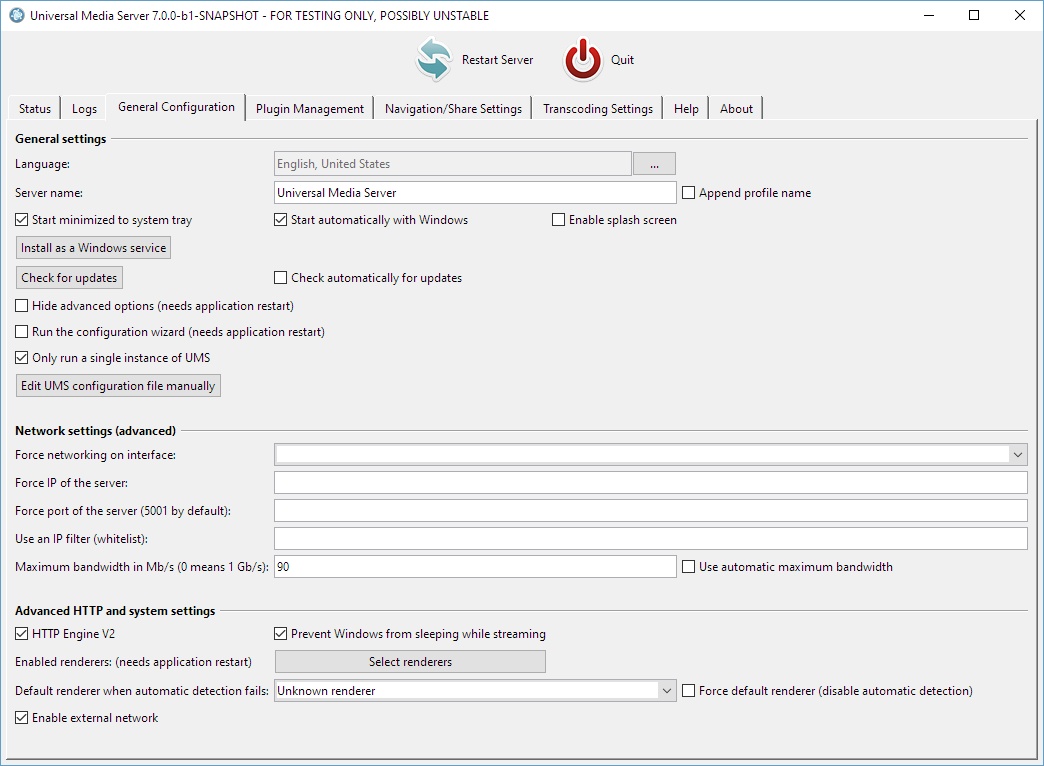

I do think that more could be done though. Most OS'es these days also comes with firewalls enabled by default, and not-so-technical users will be scared to turn them off even if they are protected by a router and NAT. It can be quite tricky to deal with, as there are a number of different software firewalls available and it's hard to test incoming access without cooperating with an external host. As long as this in as default, there is nothing further you can do to speed up the process.Seems to me like UMS isn't taking care of firewalls and simply assumes that everybody will turn them off. So, the only thing you should make sure is that you haven't disabled the cache/database, and that there aren't any errors in your log (or that the profile folder with the database is on a very slow storage volume).

I think that this process could be made quite a lot faster though, but that would mean some significant rewriting of the code. If a folder has a huge number of files, this can take some time, but for "normal" folders that's reasonably populated, this shouldn't be too bad. This happens every time regardless of whether the media information itself is cached or not. This depends on what the renderer supports and other factors. There's another thing that happens as well, and that is that UMS "calculates" in what form the media can be presented to the renderer. That said, entering a folder should be fairly quick if the cache has been populated, as the files themselves doesn't need to be analyzed. The advantage is that changes are reflected (to some extent, but there are other issues that means that's still not always the case), the disadvantage is first and foremost the speed. Either way, the folder contents will be enumerated each time. If it has, the information is gotten from the cache, if not it is parsed and stored in the cache. UMS does this differently, it actually checks the content of a folder each time you enter it, and then looks in the cache if the information for each file has been cached. The simple scenario probably employed by most is that folders are scanned, the content indexed in a database, and then all browse requests from renderers are fetched exclusively from the database.

But, it doesn't do it "completely" - which I suspect many other servers (like Serviio) do.

UMS does scan the folders in the background, and does cache the results so that the content is displayed faster.


 0 kommentar(er)
0 kommentar(er)
